
Christie's is a British auction house founded in 1766 by James Christie. Its main premises are on King Street, St James's in London, at Rockefeller Center in New York City and at Alexandra House in Hong Kong. It is owned by Groupe Artémis, the holding company of François-Henri Pinault. Sales in 2015 totalled £4.8 billion. In 2017, the Salvator Mundi was sold for $400 million at Christie's in New York, at the time the highest price ever paid for a single painting at an auction.
Sotheby's is a British-founded American multinational corporation with headquarters in New York City. It is one of the world's largest brokers of fine and decorative art, jewellery, and collectibles. It has 80 locations in 40 countries, but maintains a significant presence in the UK.
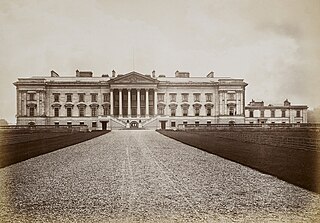
Hamilton Palace was a country house in Hamilton, South Lanarkshire, Scotland. The former seat of the Dukes of Hamilton, it dated from the 14th century and was subsequently much enlarged in the 17th and 19th centuries. Widely acknowledged as having been one of the grandest houses in the British Isles, the palace was situated at the centre of the extensive Low Parks, with the Great Avenue, a north–south tree-lined avenue over three miles in length, as its axis. The Low Parks also contained the Hamilton Mausoleum designed by David Hamilton and the 11th-century Netherton Cross, while the High Parks contain Chatelherault Hunting Lodge designed by William Adam. Hamilton Palace was demolished between 1921 and 1926 after coal works beneath the house were discovered to threaten its structural integrity.

The Massacre of the Innocents is the subject of two paintings by Peter Paul Rubens depicting the episode of the biblical Massacre of the Innocents of Bethlehem, as related in the Gospel of Matthew (2:13-18). The first, measuring 142 x 182 cm, was painted after his return to his native Antwerp in 1608, following eight years spent in Italy.

Le Rêve is a 1932 oil on canvas painting by Pablo Picasso, then 50 years old, portraying his 22-year-old mistress Marie-Thérèse Walter. It is said to have been painted in one afternoon, on 24 January 1932. It belongs to Picasso's period of distorted depictions, with its oversimplified outlines and contrasted colors resembling early cubism. The erotic content of the painting has been noted repeatedly, with critics pointing out that Picasso painted an erect penis, presumably symbolizing his own, in the upturned face of his model. On 26 March 2013, the painting was sold in a private sale for $155 million, making it one of the most expensive paintings ever sold.

Heritage Auctions is an American multi-national auction house based in Dallas, Texas. Founded in the 1970s and 1980s from a partnership between two rival collectors, Heritage is an auctioneer of numismatic collections, comics, fine art, books, luxury accessories, real estate, and memorabilia from film, music, history, and sports.

Water Lilies is a series of approximately 250 oil paintings by French Impressionist Claude Monet (1840–1926). The paintings depict his flower garden at his home in Giverny, and were the main focus of his artistic production during the last thirty years of his life. Many of the works were painted while Monet suffered from cataracts.
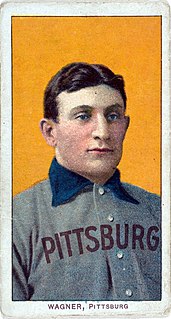
The T206 Honus Wagner baseball card depicts the Pittsburgh Pirates' Honus Wagner, known as "The Flying Dutchman,” a dead-ball era baseball player who is widely considered to be one of the best players of all time. The card was designed and issued by the American Tobacco Company (ATC) from 1909 to 1911 as part of its T206 series. Wagner refused to allow production of his baseball card to continue, either because he did not want children to buy cigarette packs to get his card, or because he wanted more compensation from the ATC. The ATC ended production of the Wagner card, and a total of only 50 to 200 cards were ever distributed to the public, as compared to the "tens or hundreds of thousands" of T206 cards, over three years in sixteen brands of cigarettes, for any other player. In 1933, the card was first listed at a price value of US$50 in Jefferson Burdick's The American Card Catalog, making it the most expensive baseball card in the world at the time.
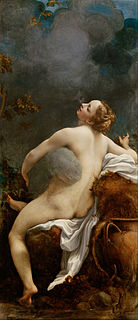
The Orleans Collection was a very important collection of over 500 paintings formed by Philippe d'Orléans, Duke of Orléans, mostly acquired between about 1700 and his death in 1723. Apart from the great royal-become-national collections of Europe it is arguably the greatest private collection of Western art, especially Italian, ever assembled, and probably the most famous, helped by the fact that most of the collection has been accessible to the public since it was formed, whether in Paris, or subsequently in London, Edinburgh and elsewhere.

Orange, Red, Yellow is a 1961 Color Field painting by Mark Rothko. On May 8, 2012, it was sold at Christie's from the estate of David Pincus for $86,882,500, a record nominal price for post-war contemporary art at public auction.
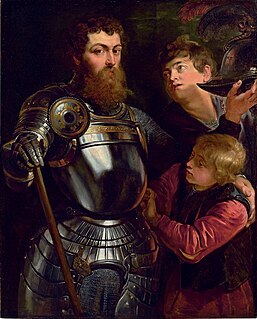
Portrait of a Commander or A Commander Being Dressed for Battle is a portrait of an unknown man in plate armour, by Peter Paul Rubens. In July 2010 it was sold for £9 million by Christie's after Sotheby's turned it down, suspecting its authenticity as a Rubens. In December 2011, the portrait was placed on loan with the Metropolitan Museum of Art in New York.
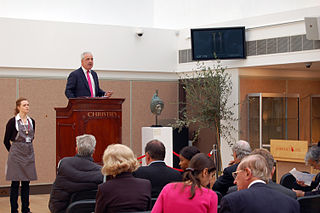
The art market is the marketplace of buyers and sellers trading in commodities, services, and works of art.

Les Femmes d'Alger is a series of 15 paintings and numerous drawings by the Spanish artist Pablo Picasso. The series, created in 1954–1955, was inspired by Eugène Delacroix's 1834 painting The Women of Algiers in their Apartment. The series is one of several painted by Picasso in tribute to artists that he admired.
Paul Raison is a leading world specialist in the field of Old Master paintings. He was for many years a Chairman of the auction house Christie's.

The Rubens vase is a Late Antique or early Byzantine hardstone carving of a single piece of agate in the form of a vase, named after a later owner, Peter Paul Rubens,, who in Flanders made a pen drawing of it, which is now held in the Hermitage Museum. The handles are decorated with the head of Pan on each side with acanthus leaves beneath each head, curled up. It is believed to have been commissioned by a Byzantine emperor, perhaps around 400 AD, and made in Constantinople. That it appeared in Europe after the Sack of Constantinople by the Fourth Crusade, may indicate that it was the result of plunder. After passing through the collections of the Dukes of Anjou, Charles V, Peter Paul Rubens, and the Mughal Emperor Jahangir, it was eventually purchased by Henry Walters.

Head of a Bear is a drawing study made by Leonardo da Vinci circa 1480. It is small in scale, measuring only 7 by 7 centimetres, and is rendered in silverpoint pencil. It is thought to be part of a study of animals that Leonardo made in this period. The artist may have drawn upon this study when painting the head of the animal in his Lady with an Ermine of 1489–1490. The drawing was owned by the British painter Sir Thomas Lawrence in the 18th century and by the art collector Norman Colville in the early 20th century. The American billionaire Thomas Kaplan purchased the drawing in 2008. It sold in 2021 for a total of £8.8 million, a record for a drawing by Leonardo.














